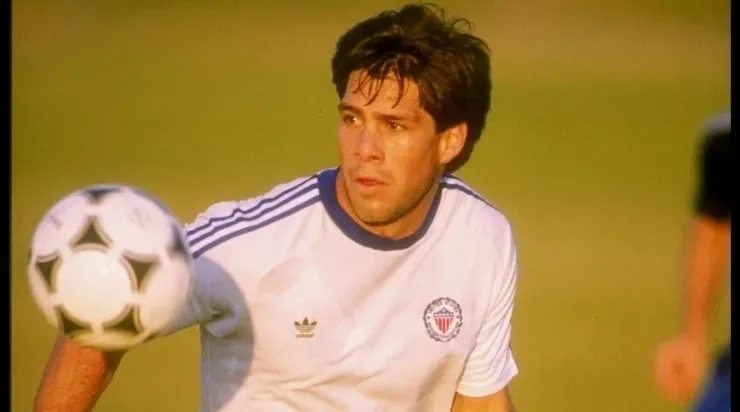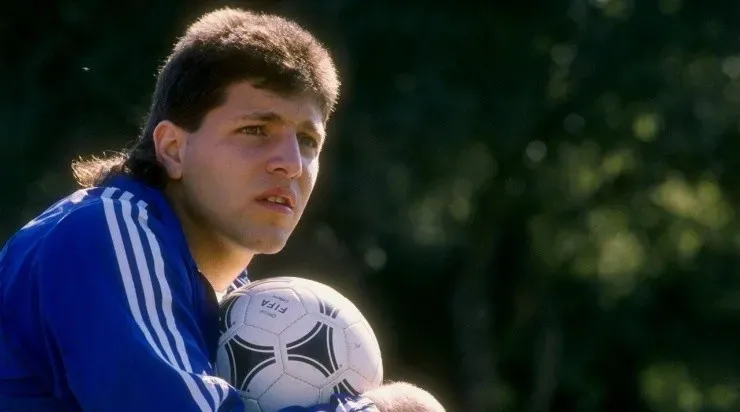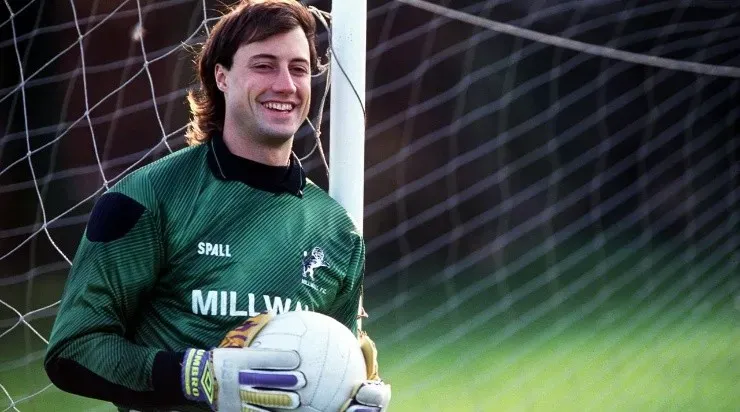Today if one takes a look at Twitter or Reddit or Big Soccer, you’d figure the United States is a passionate soccer nation, just like England, Argentina, or Germany. And why not? Soccer is the fastest growing sport in the country, it’s one of the biggest sports played among children and the country is home to Major League Soccer, a league that has 28 teams in the US and Canada.
MLS games are played to an average of 20,000 fans in stadiums built for soccer, as well as being home to domestic and foreign top-class talent. On the USMNT side the best players of the program play in the best leagues. Christian Pulisic is at Chelsea, Weston McKennie is at Juventus, and Sergiño Dest at AC Milan. 32-years-ago that was simply not the case.
There was no domestic league, only a handful of Americans playing professionally, and the national team program was completely absent from the consciousness of the average sports fan. Nonetheless a group of college students did the impossible and qualified for the 1990 World Cup in Italy. Here is a look back at the USMNT’s run to Italia 90, the World Cup, and what came after.
Taking advantage of a difficult situation
When the USMNT began their long road to qualifying for the 1990 World Cup in Italy, they did it by avoiding the biggest team in Concacaf, Mexico. El Tri never kicked a ball in qualification, as the game in the first round of qualifying against eventual World Cup participant Costa Rica was scrapped, since the Mexican federation fielded overage players in a U-20 tournament.
Mexico, who did not have the weight they have today, were ejected from competition and eliminated from the World Cup by FIFA and this gave every team a lifeline in qualification.

Peter Vermes of the USA runs down the field during a game. (Getty Images)
The USMNT entered 1989 having had a group of players participate in the 1988 Summer Olympics in soccer, that team included the likes of Tab Ramos, Frank Klopas, Paul Caligiuri, Mike Windischmann, and Peter Vermes, who would all become important in qualification and at the World Cup.
The team was coached by Bob Gansler, who prior to taking the full national team, was a youth and college coach. The move made sense since no respectable coach would dream of taking the United States job and given the fact that the current batch of players were semi-professional at best, it was an opportunity for Gansler who was familiar with the college set up.
World Cup qualification
The young and inexperienced USMNT began their qualifying campaign against Jamaica, drawing 0-0 on the road and getting a 5-1 victory at home behind goals from Hugo Perez, Klopas, Bliss, and Paul Krumpe. That victory sent the Americans to the final round of World Cup qualification in Concacaf.
While the Americans, who had not been to a World Cup in 40 years and in the process saw the NASL come and go and soccer be considered a sport for foreigners and behind professional wrestling in the ladder of importance, the pressure was on themselves to qualify if 90% of the country did not even know qualification was taking place.
But in the small soccer circle of the United States, in 1988 the US was awarded the 1994 World Cup, and while in the voting process the US’s bid received unanimous approval, in the soccer media it was panned.

US Soccer players celebrate (US Soccer)
Having a team that could qualify for the previous tournament would give the US some sort of legitimacy, be it small, that at least the national team could qualify for a cup. With Mexico out of the way this could be a huge morale boost for the program who at the time had only one paying sponsor.
With qualification underway and the 94 World Cup bid approved, Gansler took his semi-professional team to Costa Rica to get a result, they didn’t and the USMNT fell 1-0 to Los Ticos. In the rematch played at the end of April a Tab Ramos goal would give the team a 1-0 win and three massive points to aid a possible qualification.
A draw against Trinidad and Tobago at home followed, with a win over Guatemala. A huge road win against El Salvador was met with two draws against Guatemala and El Salvador at home. Setting up a must win match against Trinidad and Tobago for the final spot for Italy 90.
The shot heard around the world
While admirable, the USMNT had a decent qualification campaign, getting results on the road and losing only to the first-place team. With Costa Rica assured of their ticket to Italy, Trinidad and Tobago needed only a draw against the Americans to go to the World Cup.

Paul Caligiuri of the United States soccer team in action. Mandatory Credit: Ken Levine /Allsport
The Americans needed to win, or it was over. In a jam-packed national stadium waiting for celebration the USMNT held tight and in the 30th minute in the first half got a lucky break.
Two of the only few professional soccer players on the squad linked up, Tab Ramos laid the ball to Paul Caligiuri who took a wild shot from outside the area, the ball dipped into the back of the net and gave the USMNT an unexpected lead.
Despite Trinidad’s best efforts and a solid Tony Meola, who had overtaken as the USMNT’s number one in goal. The USMNT would win and clinch a World Cup spot on the road and end a 40-year drought.
The win was covered all over the world as an anomaly, and while a footnote in the United States and the world, it was an important one. The United States, the country set to host the 1994 World Cup, was returning to the tournament for the first time since 1950.
“For us, [losing] would have been a disaster. All this that you see now [in US soccer] is because of what Paul Caligiuri did in Trinidad & Tobago. It’s as simple as that, if you want to pin it to one specific moment. For example, Nike jumped in with hundreds of millions of dollars to build all these academies, and that never would have happened if Paul hadn’t scored that goal. They should put Paul on a lifetime stipend. Seriously”, Bruce Murray stated in an oral look back to The Guardian in 2015.
World Cup bound with whatever they could put together
When finally, the USMNT learned their fate for Italy 90, it could have been worse… The US drew host Italy, Austria, and Czechoslovakia, a group of firm European teams against what would be the youngest and most inexperienced team at the World Cup.

USMNT squad at Italy 1990 (US Soccer)
With all due respect to the players, the USMNT put together a laughable squad when compared to the one’s in their group. Only four players had European contracts, while the rest including starting goalkeeper Tony Meola played for their universities or semi-pro clubs.
A club named Albany Capitals had three representatives on the squad, the team itself played in the American Soccer League, it’s fourth incarnation, the club would fold by 1991, the league another failed attempt to professionalize soccer in the United States.
Nonetheless despite the baggage of being considered semi-pro the Americans had Tab Ramos, John Harkes, Brian Bliss, Tony Meola, Christopher Sullivan, Marcelo Balboa, Kasey Keller, Paul Caligiuri, and Eric Wynalda. They would all eventually leave their mark on US Soccer and on their own after the 90 World Cup.

Tony Meola of the USA Soccer Team relaxes during a practice. Mandatory Credit: Mike Powell /Allsport
According to some of the players on the squad, the USMNT World Cup roster made between $40,000 to $50,000 that year representing the USMNT at the World Cup. Some of the players did not even know if they should negotiate bonuses. While others contemplated going to the World Cup at all given they made twice as much working as professionals in their fields of study. Eventually as many as 10 players had to cut ties with Puma as US Soccer had a deal to completely dress the team at the World Cup with Adidas gear.
“As a 32-year-old without an outdoor pro league to play in, there was no chance but to say yes to the contract. There were sacrifices to be made, including wearing Adidas shoes”, defender Paul Krumpe told The Guardian in 2015.
At the World Cup
The USMNT had to put all the semi-professional antics of US Soccer behind them to concentrate on the big stage. The Americans would play their first match against Czechoslovakia and were ran off the field. According to goalkeeper Tony Meola, the USMNT had observed Czechoslovakia against Germany, “It was the worst thing to do was watch them against Germany, in the tunnel before the game John Doyle was our tallest guy and he was the second shortest guy on their team. I thought to myself at that moment, ‘we’re in a lot of trouble’”, Meola said on MLS Extratime radio in 2019.

USMNT in action against Italy (US Soccer)
The match ended 5-1, the USMNT lone goal was scored by Paul Caligiuri and the team looked completely overwhelmed, worse yet the US was due to play Italy in their second match. The Italian papers had predicted a result in the range of 12-0 and went as far as to ask Gansler if it would be a moral victory if the team only lost 5-0 or 6-0 to the hosts.
On June 14, 1990, a ragtag bunch of college kids played an honorable match against Italy, only losing 1-0 but having chances of their own against a shocked Italian squad that were impressed by the Americans. Tab Ramos, John Harkes, Tony Meola, and Marcelo Balboa had spotlight and career making performances on the night.
0-2 in their group the USMNT finished the World Cup with a respectable 2-1 defeat to Austria, Bruce Murray scored the final goal of the US in the 90 World Cup and despite going 0-3, the team improved as the tournament went on and showed that there was indeed talent on the USMNT.
After the World Cup
Tony Meola, Tab Ramos, John Harkes, Eric Wynalda, and Kasey Keller were some of the players who found professional contracts or better transfers after the tournament. John Harkes would build a respectable career in England, starting right after the World Cup with Sheffield Wednesday.

KASEY KELLER OF THE MILLWALL TEAM. Mandatory Credit: Gray Mortimore/ALLSPORT
Kasey Keller would become a cult icon with Millwall, Wynalda would go on to Germany and become a talented goal scorer. John Doyle would move to Örgryte IS in Sweden and Desmond Armstrong an unlikely move to Santos of Brazil.
While individually the national team had players go on to Europe the program was still six years away from Major League Soccer, a long way away from respect, and were hosting the World Cup in four years. Still a pipeline was forming and by 1994 players of the caliber of Alexi Lalas, Cobi Jones, and Claudio Reyna would surface.
Legacy
The USMNT 1990 World Cup squad was a group of naive players hoping to make history, while the results may be meager in hindsight to results that would follow the program later on, it was a steppingstone.

Tab Ramos in MLS during 1996 (Getty Images)
From the 90 World Cup many of those players would be the foundation of the US squad that defeated Colombia and held their own against Brazil and reached the round of 16 in 1994. Once Major League Soccer kicked off, John Harkes, Tony Meola, John Doyle, Marcelo Balboa, Tab Ramos, and Chris Henderson were some of the local talents on the inaugural squads.
Today many of the participants of the 1990 World Cup have gone on to coaching, most notably Peter Vermes who has been in charge of Sporting Kansas City since 2009 and has won 1 MLS Cup and three US Open Cup titles.
Chris Henderson is one of the best executives in MLS now with Inter Miami after working with the successful Seattle Sounders. Other talents went on to media, like Marcelo Balboa and Tony Meola, while Ramos and Harkes are in coaching on a smaller stage.
The 1990 US World Cup team to those who look at results went 0-3 in Italy, but to those who have followed US Soccer for a long time, they are pioneers, they finally brought US Soccer back from the soccer prison the program and sport was in. Some of them would feature in other World Cup’s or become key figures in MLS.

Christian Pulisic #10 of the United States controls the ball against Morocco at TQL Stadium on June 01, 2022 in Cincinnati, Ohio. (Photo by Andy Lyons/Getty Images)
There would be no Pulisic, Reyna, Weah, or Adams if it weren’t for Meola, Harkes, Banks, and Windischmann.





